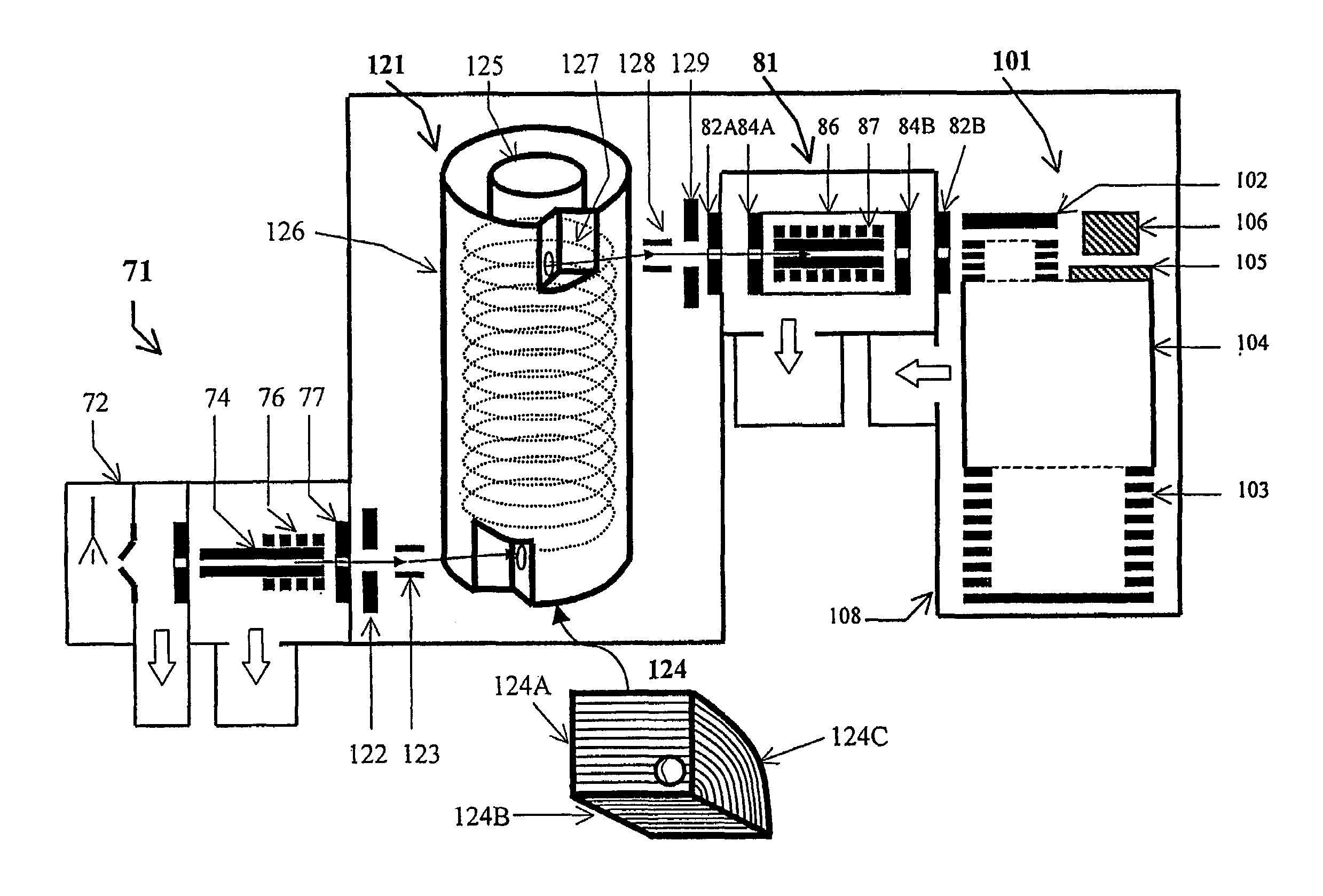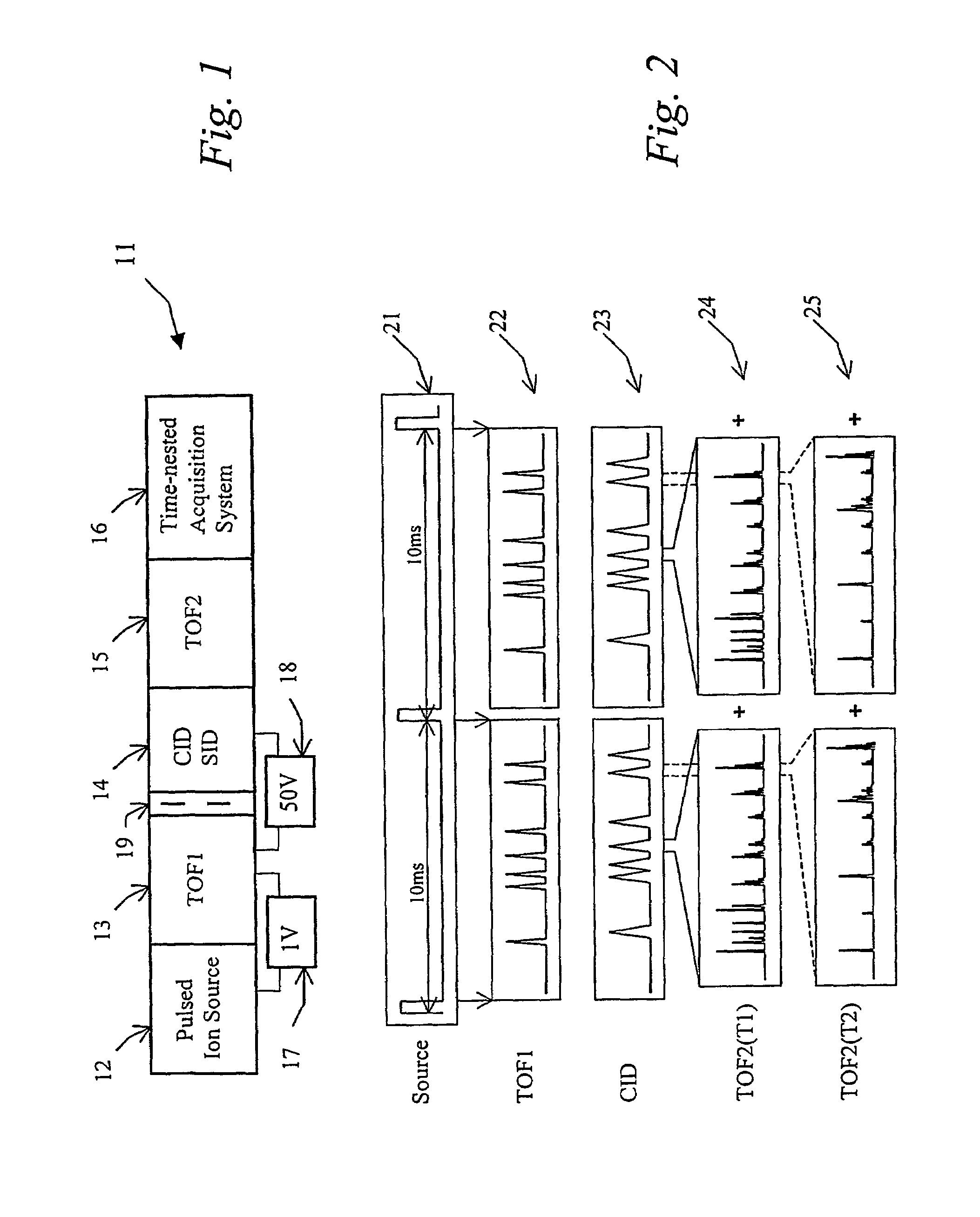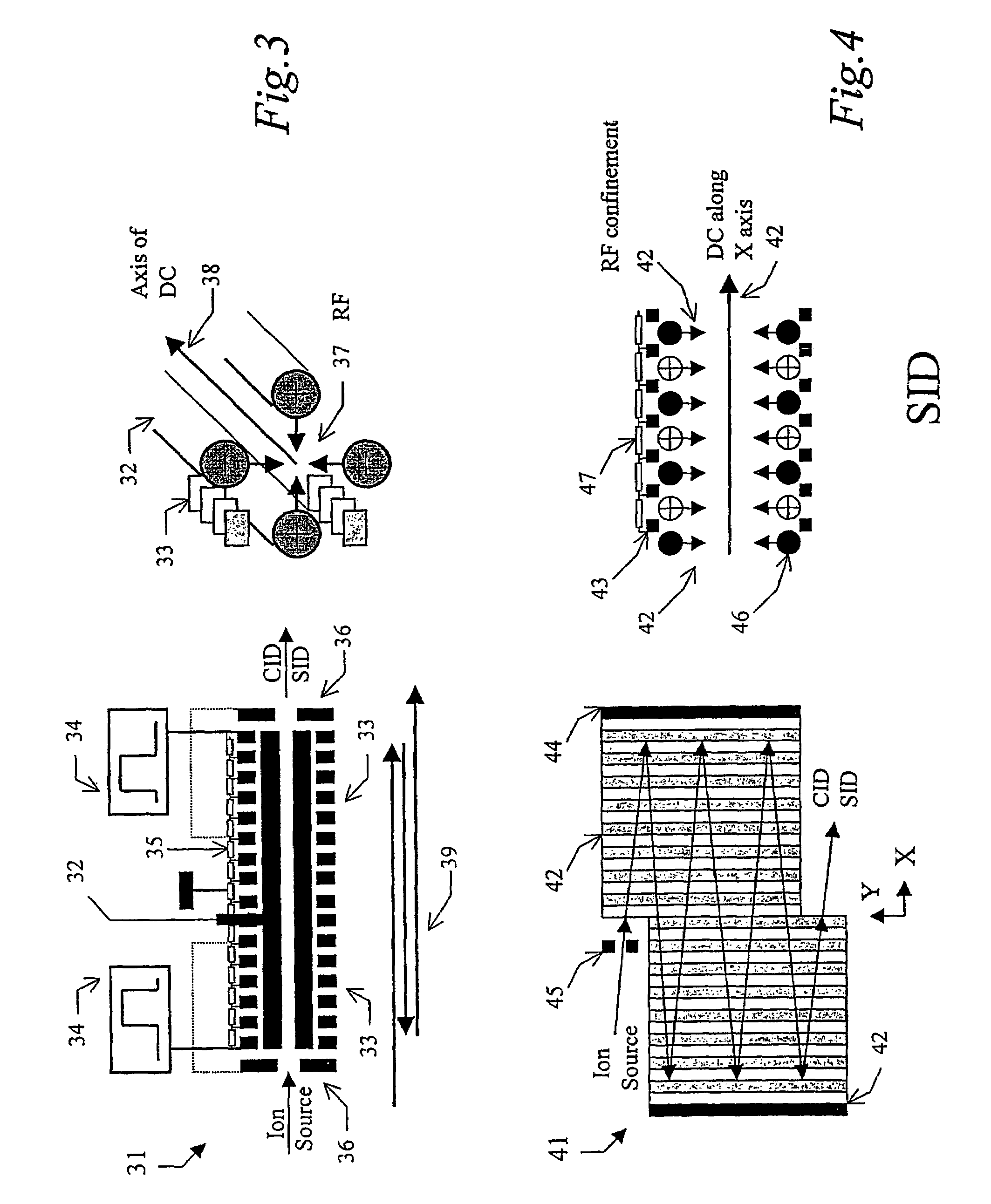Tandem time of flight mass spectrometer and method of use
a mass spectrometer and time-of-flight technology, applied in mass spectrometers, separation processes, dispersed particle separation, etc., can solve the problems that the new time-nested tof—tof method cannot be implemented on existing tof—tof instruments without severe sacrifice of performance, and achieve high-sensitivity and rapid ms—ms analysis, avoid detector saturation, and improve the resolution of parent ion separation
- Summary
- Abstract
- Description
- Claims
- Application Information
AI Technical Summary
Benefits of technology
Problems solved by technology
Method used
Image
Examples
Embodiment Construction
[0046]A method of tandem mass spectrometry analysis of the invention comprises the steps of:[0047]generating an ion pulse in an ion source, containing a mixture of different analyte ions;[0048]separating the analyte ions according to time of flight within a first time-of-flight mass spectrometer, and, thus, generating a train of ion packets in a sequence of their masses;[0049]sequentially fragmenting the analyte ions without mixing the separated ion packets;[0050]rapidly mass analyzing the fragmented ions within a second time-of-flight mass spectrometer at a time scale much shorter than a time scale of the first separation step;[0051]acquiring fragment mass spectra for multiple analyte ion mass-to-charge ratios at a single ion pulse out of the ion source; and,[0052]optionally, summing the fragment spectra for each of the analyte ions over multiple source pulses.
[0053]Fundamental to the method is arranging the separation time in the first TOF much longer than fragmentation time and t...
PUM
 Login to View More
Login to View More Abstract
Description
Claims
Application Information
 Login to View More
Login to View More - R&D
- Intellectual Property
- Life Sciences
- Materials
- Tech Scout
- Unparalleled Data Quality
- Higher Quality Content
- 60% Fewer Hallucinations
Browse by: Latest US Patents, China's latest patents, Technical Efficacy Thesaurus, Application Domain, Technology Topic, Popular Technical Reports.
© 2025 PatSnap. All rights reserved.Legal|Privacy policy|Modern Slavery Act Transparency Statement|Sitemap|About US| Contact US: help@patsnap.com



